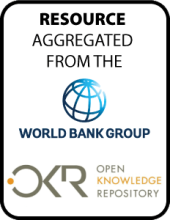Land Library
Bienvenido a la biblioteca de Land Portal. Explora nuestra amplia colección de recursos de acceso abierto (más de 74.000), que incluye informes, artículos de revistas científicas, trabajos de investigación, publicaciones revisadas por pares, documentos jurídicos, vídeos y mucho más.
/ library resources
Showing items 1 through 9 of 828.Ulaanbaatar's (UB) population has swollen from half a million in 2001 to approximately 1.2 million in 2011, accounting for over 40 percent of the country's population. This trend is likely to continue as economic growth is increasingly concentrated in UB.
Agriculture is the economic foundation of many Sub-Saharan Africa (SSA) countries, employing about 60 percent of the workforce and contributing an average of 30 percent of gross domestic product.
The objective of this case study is to document an example of the successful design and implementation of housing micronance (HMF) products by analyzing the approach taken by the First Micronance Bank of Afghanistan (FMFB-A) from 2009 to 2013.
This tenth edition of Doing Business sheds light on how easy or difficult it is for a local entrepreneur to open and run a small to medium-size business when complying with relevant regulations.
Scientific evidence indicates that global warming could well lead to a sea-level rise of 1 meter or more in the 21st century.
The author provides a briefing on cost-benefit analyses (CBA) for disaster risk reduction (DRR), stating that the most cost-effective forms of DRR investment tend to be non-structural approaches, such as land use planning, warning systems, and household-level changes.
Violent conflict is a pervasive feature of the recent global landscape which has lasting impacts on human capital and these impacts are seldom gender neutral. Death and destruction alter the structure and dynamics of households, including their demographic profiles and traditional gender roles.
This housing policy in developing
countries, conjectures and refutations article discusses
housing policy in developing economies. It examines recent
research findings in light of earlier arguments as to the
Measurement of the likely magnitude of
the economic impact of climate change on African agriculture
has been a challenge. Using data from a survey of more than
9,000 farmers across 11 African countries, a cross-sectional





